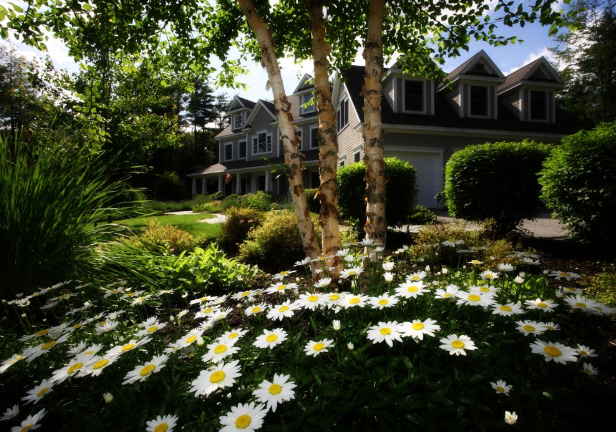This post is brought to you by Green Apple Solutions.
Maintaining a beautiful lawn is an integral part of helping your yard to look and feel it’s very best. The environment you live in can have a significant effect on this and determines the type of care which is best to provide. The maintenance and requirements which are needed will vary by location, soil type, and more.

Humidity is a condition which can cause damage to your lawn if not appropriately managed, and is often overlooked in favor of extreme heat or cold conditions. Fortunately, there is a range of steps you can take to help to protect your lawn and keep it looking and feeling its best even on the most humid of days!
Fungal Diseases
One of the most severe side effects of high levels of humidity is the increase in the likelihood of fungal infections. Humidity often comes hand in hand with heavy dew, and these keep the leaves moist at all times. Combined with heat, this creates an ideal breeding ground for all sorts of unpleasant fungal diseases.
The first sign that something is amiss is if you begin to notice brown or discolored patches on your grass. If you see this sign, it’s best to seek out professional lawn care in Florida to help. While it is impossible to control the humidity, you can help to alleviate the impact it has on your lawn.
Avoid Watering
Fungal diseases thrive in warm, damp conditions, so the easiest way to help reduce their impact is to remove any additional water. Turn off any automatic watering systems which may be in use, and avoid any watering during the evenings. There is less sunlight at this time, so the lawn has less of a chance to dry out.
Increase Airflow
Increasing the amount of air which can be received by your lawn is also a help, and will assist with the drying out process. Make sure that any overhanging branches are entirely cut back, and remove any unnecessary landscaping which may be blocking the sunlight from fully reaching the lawn. The aim is to create as much space as possible for air to circulate freely in an attempt to reduce the amount of moisture.
Prevention Is Better Than Cure
The easiest way to reduce fungus on your lawn is to prevent it from developing to start with if you are aware that a period of high humidity is expected to be heading your way, treat the grass with a fertilizer consisting of nitrogen and potassium. This helps to increase the natural defenses, making it more likely to fight off an attack and helps to provide a much-needed boost.
Fungal diseases are unpleasant and can cause unwanted damage to your lawn, but unfortunately, they can be hard to prevent. There are, however, simple steps which can be taken to help prevent their development and spread in your garden, and help to keep your lawn healthy and strong throughout the summer months.




